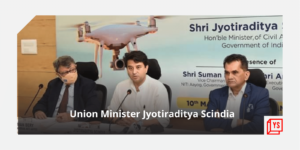As the Chief Product Officer (CPO) of Coinbase, Surojit Chatterjee looks at overall product and technology strategy for the global crypto exchange. He believes it is important to be ambitious in a relatively new segment like crypto.
“Crypto is where the internet was back in 1995 or earlier. You could not really imagine what could be done with the internet and that one day you will be using the internet for social activity, entertainment, work etc. Nobody ever imagined there would be cable TV. Thus, in crypto too, there are use cases that cannot be imagined. We give a lot of leeway; we give a lot of opportunities for our employees to try out, experiment new things,” explains Surojit.
“Of the 10 things we try, six to seven will fail, but a few others will succeed. It is therefore important to keep experimenting and working on new things,” says Surojit.
In fact, experimenting and trying new things has indeed been the core thread of Surojit’s tech journey.
A technologist at heart
Working for companies like Google, Flipkart, and now Coinbase, Surojit always had one thing in mind: to build world-class products.
“I am a technologist at heart. I went to IIT-Kharagpur, studied computer science and then did a master’s in computer science. I wrote a lot of codes, and I always thought about how technology can improve people’s lives, and where we can have the maximum impact,” says Surojit.
But, Surojit’s entry into coding wasn’t a planned one. Until he got into IIT Kharagpur, he hadn’t seen a computer from a close range.
“I had seen computers in railway reservation counters. Where I lived, computers were simply not accessible. My entry into engineering happened because I was good at mathematics and loved the subject. I come from a very poor, lower middle-class family from a small town, so my parents did not really have an idea about what is the right thing to study and so forth. I went to IIT, and a lot of people said ‘oh, you should study computer science,’ and so I did” explains Surojit.
Learning to type
While he loved the idea of coding and programming, Surajit found typing tricky!
“I had never touched a keyboard before. I would barely be able to type anything in the class, and by the time I would be able to do anything, the class would be over. I would learn to type during the nights and weekends, and finish my assignments.”
“But, I loved computer science, it gave me the power to build things and when you see what you build work in front of your eyes, it can be quite powerful. I am a builder at heart. I did a lot of interesting projects back in college – AI, voice recognition, neural networks – these concepts were kind of new at that time,” says Surojit.
He graduated from IIT Kharagpur in 1997, and post his master’s degree, Surojit realised he wanted to build for the industry and see the products being used.
Surojit with Brian Armstrong
The Google journey
At Google, Surojit worked on mobile advertising and was responsible for the launch of Google Shopping in India.
As one of the first to work on mobile advertising, Surajit founded the core team here. We now know mobile advertising turned out to be a big win for Google, earning the search engine billions of dollars in revenue when it took off.
Praising Google as a well-run company, Surojit says he learnt a lot about how to build great products at the tech giant. Focus on the user and everything will happen right, he remarks, and adds, “Build first, don’t worry about making money.”
“I later worked at Flipkart, where technology was changing the way a billion people shopped. When I look at crypto and blockchain technology, it has the same potential – to create more financial inclusion for everybody in the world. We are talking about billions of people because everybody uses money; it is very fundamental. There is a potential for it to reach anyone, any adult in the world, eventually,” says Surojit.
At Flipkart, Surojit learnt that once you build a good product, revenue will follow. “Focus on the users, take moonshots, and have ambitious ideas.”
Between 2015 and 2017, when Surojit was in India, he was the Head of Product at Flipkart. Coincidentally, it was at this time that the Indian government had announced the demonetisation of all ₹500 and ₹1,000 banknotes of the Mahatma Gandhi Series.
Flipkart to Coinbase
While small and medium businesses were hit hard by the move, even an ecommerce giant like Flipkart felt the heat of demonetisation. It’s cash on delivery model, which was close to 70 percent of its business, was especially hit hard.
“It was not just us, it was every ecommerce company at that time as digital payments were not as common back then. Nevertheless, we quickly adapted and we figured out it was okay. That’s when I saw the value of sovereign currencies like Bitcoin, Ethereum and others. That’s when I bought my first Bitcoin. I read the whitepaper a while back.”
He explains “That kind of pushed me to try out crypto and buy my first Bitcoin. In 2019, I started talking to Coinbase and with Brian Armstrong (CEO of Coinbase). He is very inspiring. I really felt like ‘this is a space which is like the early internet.’ By the time I entered the job market in the late 90s, I had missed the internet excitement. I felt this was an opportunity to be at the ground level, and help shape an industry and build a lot of interesting products and stuff for the future. As a builder there is nothing more satisfying, and that’s what pushed me towards Coinbase,” says Surojit.
Surojit believes crypto is not just about tokens, but about being programmable and having exciting use-cases. According to him, this nascent segment has still not experienced 99 percent of its potential.
In the Coinbase wallet, one can access decentralised exchanges in the backend because the team works with decentralised exchange indicators. Thus, the centralised exchanges also have a role because a lot of people want custody.
According to Surajit, centralised exchanges can give a more curated, sandbox kind of experience.
He adds, “Crypto and blockchain technology is going to disrupt and change the internet for the better. Rather than an advertising-based internet, it will be a creator-economy-based, privacy-safe internet that also has the potential to impact billions of people. And that’s what is inspiring for me.”
Currently, the team works on two fundamental principles – trust and usability. Everything built needs to be simple and easy to use. It also needs to be secure and compliant with the local laws, Surajit says.
“When you talk to users and see what they are using, you get a lot of ideas. We talk to our users and try to understand why there are gaps. Also, being a new area, we are building things that never existed before,” explains Surojit.
According to him, “In crypto, the engine is visible, and it is not the most usable technology yet for mainstream users.”
“And the reason for that is, a lot of software layers, technology stack is yet to be built. If you look at ecommerce in 1995 – it was very clunky, almost felt like it would never work at that time,” adds Surojit.
Taking risks
He says, globally, on-ramp to crypto, one of the most critical problems to solve was the need to convert your fare to crypto to participate in the crypto economy, metaverse, Web 3, and so on.
“We have solved this in many places, we have worked with banks, payment partners and so forth to make it seamless for users to convert their fare currency into crypto. However, more work has to be done, the problem is still not a solved. There are other players who are trying to solve this problem too, so we will see how the industry will solve it eventually,” says Surojit.
Advising techies, Surojit says looking back, one thing that worked for him was taking risks.
“However, I wish I took even more risks, and did something new and different. When I started working on mobile advertising, everybody told me mobile will never succeed. I remember giving a presentation, where I was leading Mobile Ads at Google. And I was always the last person to present. On the OS, there is an enormous amount of revenue on the desktop. I think it was a large retail giant or some retail firm’s CMO, who said- “I love your enthusiasm, I love your passion, but nobody will buy a dress on a mobile phone. Are you kidding me? You must touch and feel it, wear it, I mean, you know this now, right”?”
Having worked in companies like Flipkart and Myntra, he now knows people do not need to actually go to a shop to buy a dress anymore.
Surojit says that was a bet on a completely new technology that over time, improved. At the time, mobile technology was completely new, but the industry solved those problems and you could do everything on mobile.
“My advice is to take some risks, try something new. The biggest way to reinvent yourself is to try something new and feel a little uncomfortable. Because when you try something new, you are not the person who is the most experienced. You kind of go back to the ground level, become humble, learn from others, and then slowly build up. Every few years, do that,” signs off Surajit, experience speaking loud and clear.

![You are currently viewing [Techie Tuesday] Meet Coinbase CPO Surojit Chatterjee, who has built core products at Google and Flipkart](https://blog.digitalsevaa.com/wp-content/uploads/2022/04/Surojit-1649734335062.jpeg)








